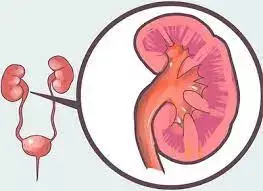- Home
- Medical news & Guidelines
- Anesthesiology
- Cardiology and CTVS
- Critical Care
- Dentistry
- Dermatology
- Diabetes and Endocrinology
- ENT
- Gastroenterology
- Medicine
- Nephrology
- Neurology
- Obstretics-Gynaecology
- Oncology
- Ophthalmology
- Orthopaedics
- Pediatrics-Neonatology
- Psychiatry
- Pulmonology
- Radiology
- Surgery
- Urology
- Laboratory Medicine
- Diet
- Nursing
- Paramedical
- Physiotherapy
- Health news
- Fact Check
- Bone Health Fact Check
- Brain Health Fact Check
- Cancer Related Fact Check
- Child Care Fact Check
- Dental and oral health fact check
- Diabetes and metabolic health fact check
- Diet and Nutrition Fact Check
- Eye and ENT Care Fact Check
- Fitness fact check
- Gut health fact check
- Heart health fact check
- Kidney health fact check
- Medical education fact check
- Men's health fact check
- Respiratory fact check
- Skin and hair care fact check
- Vaccine and Immunization fact check
- Women's health fact check
- AYUSH
- State News
- Andaman and Nicobar Islands
- Andhra Pradesh
- Arunachal Pradesh
- Assam
- Bihar
- Chandigarh
- Chattisgarh
- Dadra and Nagar Haveli
- Daman and Diu
- Delhi
- Goa
- Gujarat
- Haryana
- Himachal Pradesh
- Jammu & Kashmir
- Jharkhand
- Karnataka
- Kerala
- Ladakh
- Lakshadweep
- Madhya Pradesh
- Maharashtra
- Manipur
- Meghalaya
- Mizoram
- Nagaland
- Odisha
- Puducherry
- Punjab
- Rajasthan
- Sikkim
- Tamil Nadu
- Telangana
- Tripura
- Uttar Pradesh
- Uttrakhand
- West Bengal
- Medical Education
- Industry
No Difference in Time to Relapse Between Two Non-Steroid Immunosuppressants in Childhood Nephrotic Syndrome: JAMA

No Difference in Time to Relapse Between Two Non-Steroid Immunosuppressants in Childhood Nephrotic Syndrome suggests a new study published in the JAMA.
Cyclophosphamide and calcineurin inhibitors are the most used nonsteroid immunosuppressive medications globally for children with various chronic inflammatory conditions. Their comparative effectiveness remains uncertain, leading to variation in worldwide practice.
Nephrotic syndrome is the most common kidney disease managed by pediatricians globally and suboptimal treatment is associated with high morbidity.
A study was done to evaluate the comparative effectiveness of cyclophosphamide vs calcineurin inhibitors (tacrolimus or cyclosporine) for childhood nephrotic syndrome relapse prevention. Using target trial emulation methods, the study team emulated a pragmatic, open-label clinical trial using available data from the Insight Into Nephrotic Syndrome: Investigating Genes, Health, and Therapeutics (INSIGHT) study. INSIGHT is a multicenter, prospective cohort study in the Greater Toronto Area, Canada. Participants included children (1 to 18 years) with steroid-sensitive nephrotic syndrome diagnosed between 1996 and 2019 from the Greater Toronto Area, who initiated cyclophosphamide or a calcineurin inhibitor treatment. Data analysis was performed in 2024.
The primary outcome was time to relapse, analysed by weighted Kaplan-Meier and Cox proportional hazards models. Secondary outcomes included relapse rates, subsequent immunosuppression, kidney function, hypertension, adverse events, and quality of life. Results Of 578 children, 131 initiated calcineurin inhibitors, and 87 sequentially initiated both medications. Baseline characteristics were well balanced after propensity score weighting. During the median 5.5-year follow-up, there was no significant difference in time to relapse between calcineurin inhibitor vs cyclophosphamide treatment.
Relapses were more common after calcineurin inhibitor treatment than cyclophosphamide in the weighted cohorts, but not statistically significant. There were also no significant differences in subsequent relapse rates, nonsteroid immunosuppression use, or kidney function between medications. Calcineurin inhibitor treatment was associated with more hospitalisations and intravenous albumin use. In this study, there was no evidence of a difference in time to relapse after cyclophosphamide and calcineurin inhibitor treatment in children with nephrotic syndrome. Cyclophosphamide treatment is shorter in duration and more accessible globally than calcineurin inhibitors.
Reference:
Robinson CH, Aman N, Banh T, et al. Comparative Efficacy of Nonsteroid Immunosuppressive Medications in Childhood Nephrotic Syndrome. JAMA Pediatr. Published online January 27, 2025. doi:10.1001/jamapediatrics.2024.5286
Dr. Shravani Dali has completed her BDS from Pravara institute of medical sciences, loni. Following which she extensively worked in the healthcare sector for 2+ years. She has been actively involved in writing blogs in field of health and wellness. Currently she is pursuing her Masters of public health-health administration from Tata institute of social sciences. She can be contacted at editorial@medicaldialogues.in.
Dr Kamal Kant Kohli-MBBS, DTCD- a chest specialist with more than 30 years of practice and a flair for writing clinical articles, Dr Kamal Kant Kohli joined Medical Dialogues as a Chief Editor of Medical News. Besides writing articles, as an editor, he proofreads and verifies all the medical content published on Medical Dialogues including those coming from journals, studies,medical conferences,guidelines etc. Email: drkohli@medicaldialogues.in. Contact no. 011-43720751


